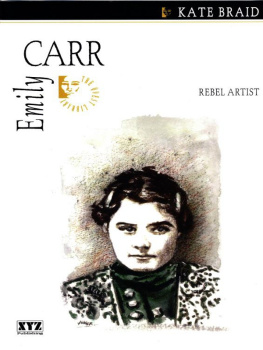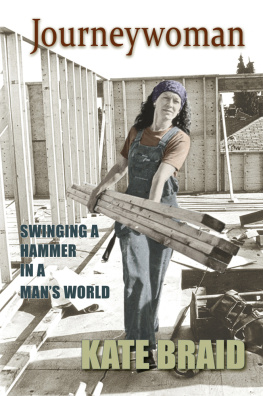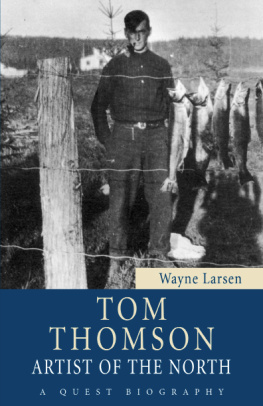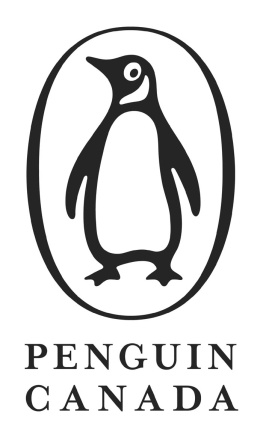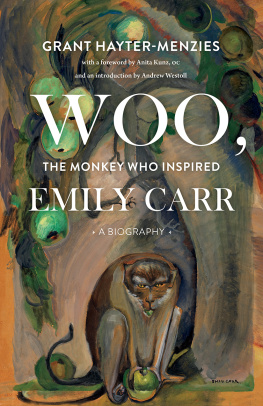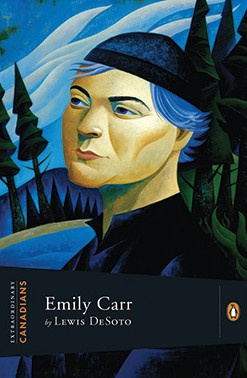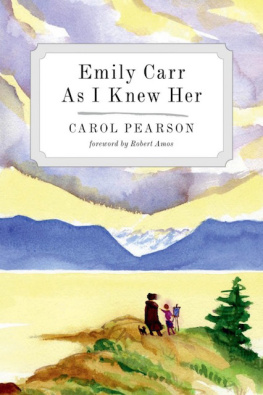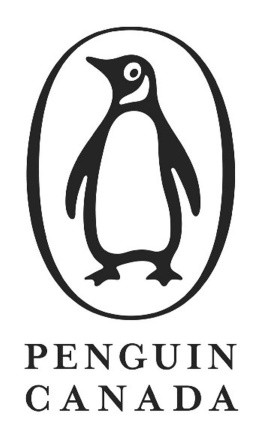
Emily Carr, 1871-1945.

Kate Braid

Kate Braid holds a Master of Arts degree in Communication from Simon Fraser University and a Master of Fine Arts degree in Creative Writing from the University of British Columbia. She also holds an interprovincial trades qualification certificate in Construction Carpentry. She worked as a labourer, apprentice, and journey carpenter from 1977-1991.
In 1999, Kate Braids third book of poems, Inward to the Bones: Georgia OKeefes Journey with Emily Carr, won the VanCity Book Prize for the best book on womens issues. Her 1995 book To This Cedar Fountain was nominated for the Dorothy Livesay Poetry Prize, and her first poetry title, Covering Rough Ground, won the 1991 Pat Lowther Memorial Award for best book of poetry by a Canadian woman. She has prepared two one-hour documentaries for CBC Radio, Ideas. Her poems, essays, and nonfiction writing have been published in numerous journals and anthologies. Her first nonfiction book, Red Bait! Struggles of a Mine Mill Local, was published in 1998.
Kate Braid has worked extensively as a teacher, consultant, and speaker. Since 1998 she has been employed as a Creative Writing instructor at Malaspina University-College in Nanaimo, B.C.
THE QUEST LIBRARY
is edited by
Rhonda Bailey
The Editorial Board is composed of
Ven Begamudr
Lynne Bowen
Janet Lunn
Editorial correspondence:
Rhonda Bailey, Editorial Director
XYZ Publishing
P.O. Box 250
Lantzville BC
V0R 2H0
E-mail: xyzed@telus.net
In the same collection
Ven Begamudr, Isaac Brock: Larger Than Life.
Lynne Bowen, Robert Dunsmuir: Laird of the Mines.
William Chalmers, George Mercer Dawson: Geologist, Scientist, Explorer.
Betty Keller, Pauline Johnson: First Aboriginal Voice of Canada.
Dave Margoshes, Tommy Douglas: Building the New Society.
John Wilson, Norman Bethune: A Life of Passionate Conviction.
Rachel Wyatt, Agnes Macphail: Champion of the Underdog.
Emily Carr
Copyright 2000 by Kate Braid and XYZ Publishing.
All rights reserved. The use of any part of this publication reproduced, transmitted in any form or by any means, electronic, mechanical, photocopying, recording, or otherwise, or stored in a retrieval system without the prior written consent of the publisher or, in the case of photocopying or other reprographic copying, a licence from Canadian Copyright Licensing Agency is an infringement of the copyright law.
Canadian Cataloguing in Publication Data
Braid, Kate, 1947-
Emily Carr : rebel artist
(The Quest Library ; 6)
Includes bibliographical references and index.
ISBN 0-9683601-6-5
1. Carr, Emily, 1871-1945. 2. Painters Canada Biography.
3. Authors, Canadian (English) Biography. I. Title. II. Series.
ND249.C3B72 2000 759.11 C00-940654-9
Legal Deposit: Second quarter 2000
National Library of Canada
Bibliothque nationale du Qubec
XYZ Publishing acknowledges the support of The Quest Library project by the Canadian Studies Program and the Book Publishing Industry Development Program (BPIDP) of the Department of Canadian Heritage. The opinions expressed do not necessarily reflect the views of the Government of Canada.
The publishers further acknowledge the financial support our publishing program receives from The Canada Council for the Arts, the ministre de la Culture et des Communications du Qubec, and the Socit de dveloppement des entreprises culturelles.
Chronology and Index: Lynne Bowen
Layout: discript enr.
Cover design: Zirval Design
Cover illustration: Francine Auger
Printed and bound in Canada
XYZ Publishing Distributed by: General Distribution Services
1781 Saint Hubert Street 325 Humber College Boulevard
Montreal, Quebec H2L 3Z1 Toronto, Ontario M9W 7C3
Tel: (514) 525-2170 Tel: (416) 213-1919
Fax: (514) 525-7537 Fax: (416) 213-1917
E-mail: xyzed@mlink.net E-mail: customer.service@emailgw.genpub.com

Emily CARR

REBEL ARTIST

There are hundreds of ways
to kneel and kiss the ground.
Rumi
She is the voice that says,
This way, this way.
Clarissa Pinkola Estes
This book is for the Wild Woman
Contents
L anguage has changed since Emily Carrs time. For example, in Emilys day First Nations people were called Indians, and their own names and place names were arbitrarily anglicized. The large set of islands north of Vancouver Island that are today called Haida Gwaii were then called the Queen Charlotte Islands; the Kwakwakawakw people were referred to as Kwakiutl; the Nuu-chah-nulth as Nootka; and so on. For gender, the pronoun he was used as a neutral word to refer to both men and women.
When quoting her, I repeat Emilys own vocabulary, which will at times sound old-fashioned to modern ears. In the rest of the text, I have tried to remain true to current spelling and names. However, in the present context of rapidly shifting linguistics, there may be inadvertent errors; if so, I would appreciate being informed of them in order to make corrections to future editions.
All of the quotations in this work are taken from Emily Carrs books. However, in her work she frequently distorts (or misremembers) facts, especially her age. So, for example, when her mother died she says she was twelve when she was actually fourteen. When she went to San Francisco she says she was almost sixteen when she was almost nineteen, and so on.
She also changes peoples names so that, for example, her suitor, Mayo Paddon, becomes Martyn. I have here used her actual age and the real names of people connected with her, as confirmed by her biographers.
Emily Carr was an excellent and prolific writer about her own life. I have relied heavily on her journals and books for details in this manuscript, particularly in , in order to keep as close as possible to Emilys experience of important events in her life.
Unless otherwise noted, all quotations are from Emily Carrs own writings as reprinted in The Emily Carr Omnibus (1993. Introduction by Doris Shadbolt). Sincere thanks to the publishers of The Emily Carr Omnibus: Douglas & McIntyre (Vancouver/Toronto) and the University of Washington Press (Seattle). Also thanks to Stoddart Publishing for their confirmation that Emily Carrs work is in the public domain.
Thanks for their assistance to the folk at B.C. Archives and the Vancouver Art Gallery; to Jan Ross at Emily Carr House in Victoria, B.C.; Martha Black at the Royal British Columbia Museum; Miriam Clavir, Marilyn Dumont, and Jada Pape. A warm thank you to Rhonda Bailey and Lynne Bowen.
I am particularly grateful for the excellent and detailed biographies of Emily Carr by Maria Tippett and Paula Blanchard, which I have used as my sources for factual material. Thank you also to Maria Tippett for checking the final manuscript for accuracy.
Mostly thanks, once again, to Emily.
Next page
